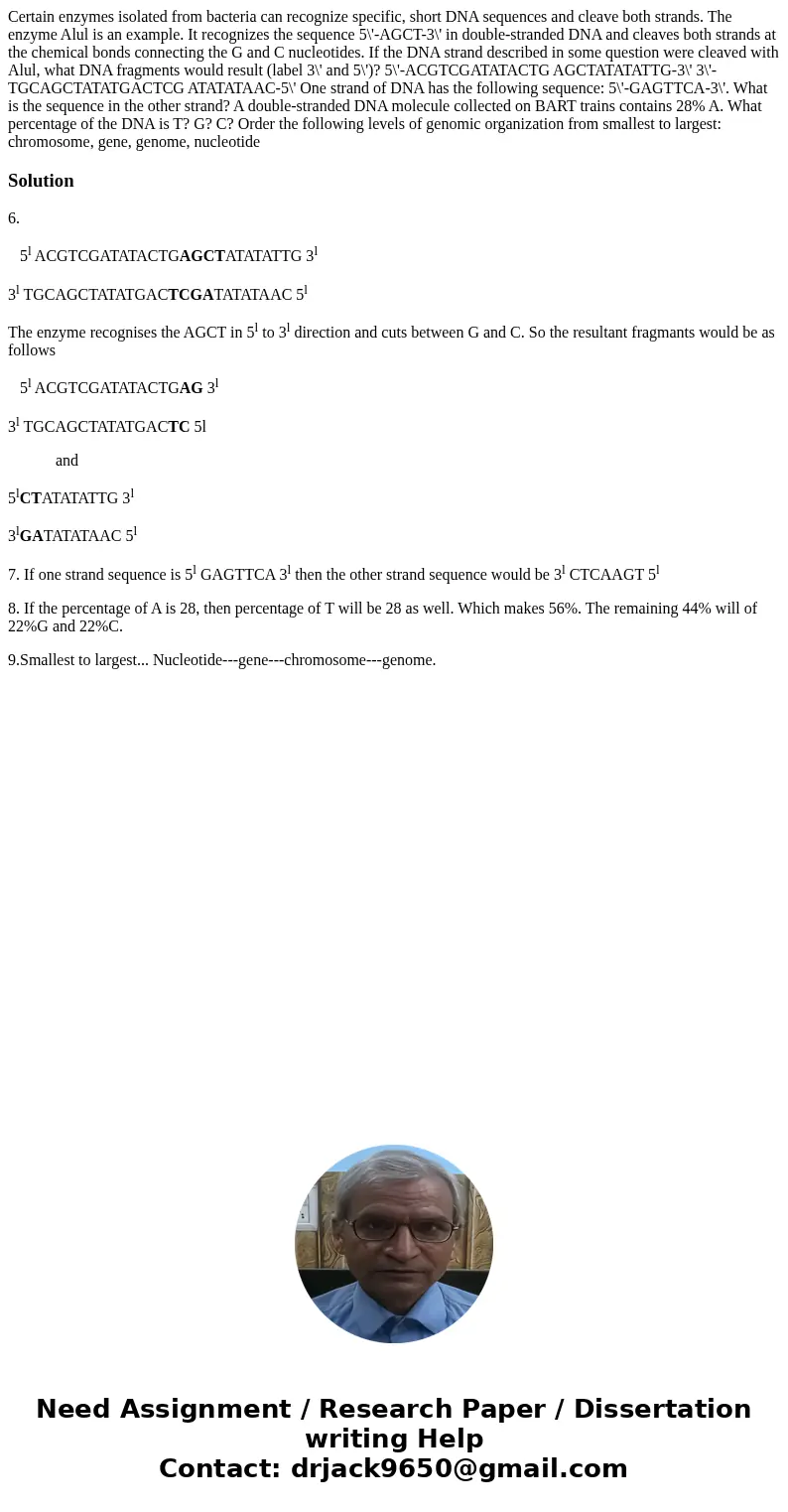Certain enzymes isolated from bacteria can recognize specifi
Certain enzymes isolated from bacteria can recognize specific, short DNA sequences and cleave both strands. The enzyme Alul is an example. It recognizes the sequence 5\'-AGCT-3\' in double-stranded DNA and cleaves both strands at the chemical bonds connecting the G and C nucleotides. If the DNA strand described in some question were cleaved with Alul, what DNA fragments would result (label 3\' and 5\')? 5\'-ACGTCGATATACTG AGCTATATATTG-3\' 3\'-TGCAGCTATATGACTCG ATATATAAC-5\' One strand of DNA has the following sequence: 5\'-GAGTTCA-3\'. What is the sequence in the other strand? A double-stranded DNA molecule collected on BART trains contains 28% A. What percentage of the DNA is T? G? C? Order the following levels of genomic organization from smallest to largest: chromosome, gene, genome, nucleotide
Solution
6.
5l ACGTCGATATACTGAGCTATATATTG 3l
3l TGCAGCTATATGACTCGATATATAAC 5l
The enzyme recognises the AGCT in 5l to 3l direction and cuts between G and C. So the resultant fragmants would be as follows
5l ACGTCGATATACTGAG 3l
3l TGCAGCTATATGACTC 5l
and
5lCTATATATTG 3l
3lGATATATAAC 5l
7. If one strand sequence is 5l GAGTTCA 3l then the other strand sequence would be 3l CTCAAGT 5l
8. If the percentage of A is 28, then percentage of T will be 28 as well. Which makes 56%. The remaining 44% will of 22%G and 22%C.
9.Smallest to largest... Nucleotide---gene---chromosome---genome.

 Homework Sourse
Homework Sourse